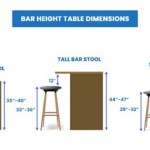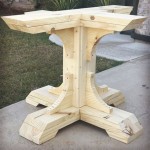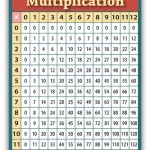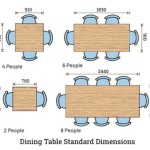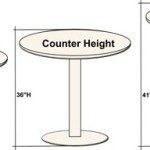What Kind of Vegetables Can Be Grown in Pots?
Cultivating vegetables in pots, also known as container gardening, is a versatile and practical method, particularly for individuals with limited space, such as those residing in apartments, townhouses, or properties with little to no yard. This approach allows for fresh produce to be grown on balconies, patios, decks, or even indoors with sufficient light. Selecting the appropriate vegetables and employing proper gardening techniques are key to achieving a successful and bountiful harvest.
The viability of growing vegetables in pots depends greatly on several factors. These include the size of the container, the type of potting mix used, the availability of sunlight, and the specific needs of the vegetable species in question. Certain vegetables are inherently better suited for container gardening than others, primarily due to their growth habits, root systems, and space requirements. Smaller, more compact varieties tend to thrive in pots, while larger, sprawling plants may struggle without ample room for root development.
Before embarking on a container vegetable garden, it's crucial to assess the available space and sunlight conditions. Most vegetables require at least six hours of direct sunlight per day to flourish. Positioning pots in a sunny location is paramount. Additionally, selecting containers of appropriate size is vital. Smaller pots may be adequate for herbs and leafy greens, while larger containers are necessary for vegetables with more extensive root systems, such as tomatoes and peppers.
This article will explore the wide range of vegetables that can be successfully grown in pots, offering guidance on selecting suitable varieties and providing essential tips for container gardening success.
Leafy Greens: A Compact and Convenient Choice
Leafy greens are among the easiest and most rewarding vegetables to cultivate in pots. Their relatively shallow root systems and compact growth habits make them ideal candidates for container gardening. A variety of leafy greens can be grown successfully using this method, providing a continuous harvest of fresh, nutritious vegetables.
Lettuce, in its various forms, is a popular choice for container gardens. Both loose-leaf and head lettuce varieties can be grown in pots. Loose-leaf lettuce, such as romaine, buttercrunch, and red leaf, can be harvested continuously by snipping off outer leaves as needed, allowing the plant to continue producing. Head lettuce, such as iceberg or romaine hearts, requires more space and takes longer to mature, but can still be successfully grown in larger containers.
Spinach is another excellent leafy green for container gardening. It prefers cooler temperatures and can be grown in spring or fall. Spinach grows quickly and can be harvested several times before bolting (going to seed) in warmer weather. Regular watering and fertilization are essential for maintaining healthy spinach growth.
Kale, a highly nutritious leafy green, is also well-suited for container gardening. It's relatively easy to grow and can tolerate a wider range of temperatures than lettuce or spinach. Kale comes in various varieties, including curly kale, lacinato kale (dinosaur kale), and red Russian kale. Similar to loose-leaf lettuce, kale can be harvested continuously by removing outer leaves.
Arugula, also known as rocket, is a peppery-flavored leafy green that's easy to grow in pots. It grows quickly and can be harvested in as little as a few weeks. Arugula prefers cooler temperatures and can bolt in hot weather. Regular watering and harvesting will help to prolong its growing season.
Other leafy greens that can be successfully grown in pots include Swiss chard, mustard greens, and collard greens. These vegetables offer a variety of flavors and textures to complement any meal. When growing leafy greens in pots, it's important to use a well-draining potting mix and to provide adequate water and fertilizer. Regular harvesting will encourage continued growth and prevent the plants from becoming overcrowded.
Fruiting Vegetables: Maximizing Space and Yield
Fruiting vegetables, such as tomatoes, peppers, and eggplants, are among the most popular choices for container gardening. While they require more space and attention than leafy greens, they can provide a rewarding harvest of fresh, flavorful produce. Selecting compact or dwarf varieties is essential for maximizing space and yield in pots.
Tomatoes are a classic container garden vegetable. Determinate or bush varieties are generally better suited for pots than indeterminate or vining varieties, as they have a more compact growth habit. Determinate tomatoes grow to a certain size and then produce all of their fruit at once, making them ideal for smaller spaces. Indeterminate tomatoes, on the other hand, continue to grow and produce fruit throughout the growing season, requiring staking or caging for support.
Cherry tomatoes and grape tomatoes are particularly well-suited for container gardening due to their smaller size and prolific fruit production. They can be grown in hanging baskets or in pots on patios or balconies. Regular watering, fertilization, and pruning are essential for maintaining healthy tomato plants and maximizing fruit yield.
Peppers are another popular choice for container gardens. Bell peppers, chili peppers, and sweet peppers can all be successfully grown in pots. Similar to tomatoes, selecting smaller or compact varieties is recommended. Peppers require warm temperatures and plenty of sunlight to thrive. Regular watering and fertilization are essential for producing a bountiful harvest.
Eggplants can also be grown in containers, although they require a bit more space than tomatoes or peppers. Look for compact or dwarf varieties to maximize space efficiency. Eggplants require warm temperatures, plenty of sunlight, and regular watering. Staking may be necessary to support the plants as the fruits develop.
Other fruiting vegetables that can be grown in pots include cucumbers, zucchini, and squash. However, these vegetables typically require larger containers and more space than tomatoes, peppers, or eggplants. Bush or dwarf varieties are generally better suited for container gardening. Providing adequate support, such as a trellis or cage, is essential for vining varieties.
When growing fruiting vegetables in pots, it's important to choose a well-draining potting mix and to provide adequate water, fertilizer, and sunlight. Regular pruning and pest control are also essential for maintaining healthy plants and maximizing fruit yield.
Root Vegetables: Unearthing Hidden Treasures
Root vegetables, such as carrots, radishes, and beets, can also be successfully grown in pots, although they require deeper containers than leafy greens or fruiting vegetables. These vegetables are relatively easy to grow and provide a unique harvest of underground treasures.
Carrots are a popular root vegetable for container gardening. Selecting shorter or round varieties, such as Nantes or Parisian carrots, is recommended for pots, as they require less depth. Carrots require loose, well-draining soil to grow properly. Overcrowding can lead to stunted growth, so it's important to space the seeds appropriately.
Radishes are one of the easiest and fastest-growing root vegetables to cultivate in pots. They mature in as little as three to four weeks and can be harvested throughout the growing season. Radishes prefer cooler temperatures and can be grown in spring or fall. Regular watering is essential for preventing the roots from becoming woody or bitter.
Beets are another excellent root vegetable for container gardening. They can be grown for both their roots and their leaves, providing a double harvest. Beets require well-draining soil and consistent moisture. Thinning the seedlings is essential for ensuring that the roots have enough space to develop.
Other root vegetables that can be grown in pots include turnips, parsnips, and potatoes. However, these vegetables typically require larger containers and more space than carrots, radishes, or beets. Selecting smaller or dwarf varieties is recommended for container gardening. Potatoes can be grown in large pots or grow bags, providing a fun and rewarding harvest.
When growing root vegetables in pots, it's important to use a loose, well-draining potting mix and to provide adequate water and fertilizer. Regular thinning is essential for preventing overcrowding and ensuring that the roots have enough space to develop. Harvesting at the appropriate time is crucial for maximizing flavor and texture.
In addition to the vegetables discussed above, a variety of other vegetables can also be successfully grown in pots, including herbs, beans, and peas. With proper planning and care, container gardening can provide a bountiful harvest of fresh, nutritious produce, even in the smallest of spaces.

The Best 11 Vegetables To Grow In Pots And Containers Gardener S Path

Vegetables You Can Grow In Small Pots Space Gardening

How To Grow Organic Vegetables In Pots About The Garden

20 Best Vegetables For Container Gardening A Piece Of Rainbow

20 Best Vegetables For Container Gardening Growing In The Garden

17 Vegetables That You Can Grow In Pots And Containers Growing Container Gardening
Vegetables In Containers Rhs Gardening

25 Most Ive Vegetables For Containers Best Pots

20 Best Vegetables For Container Gardening A Piece Of Rainbow

Vegetable Garden On A Deck Tips For Growing Vegetables Patio

